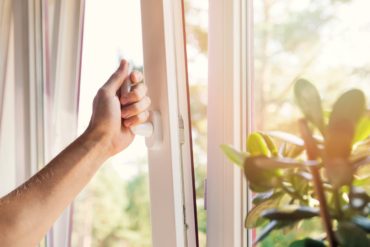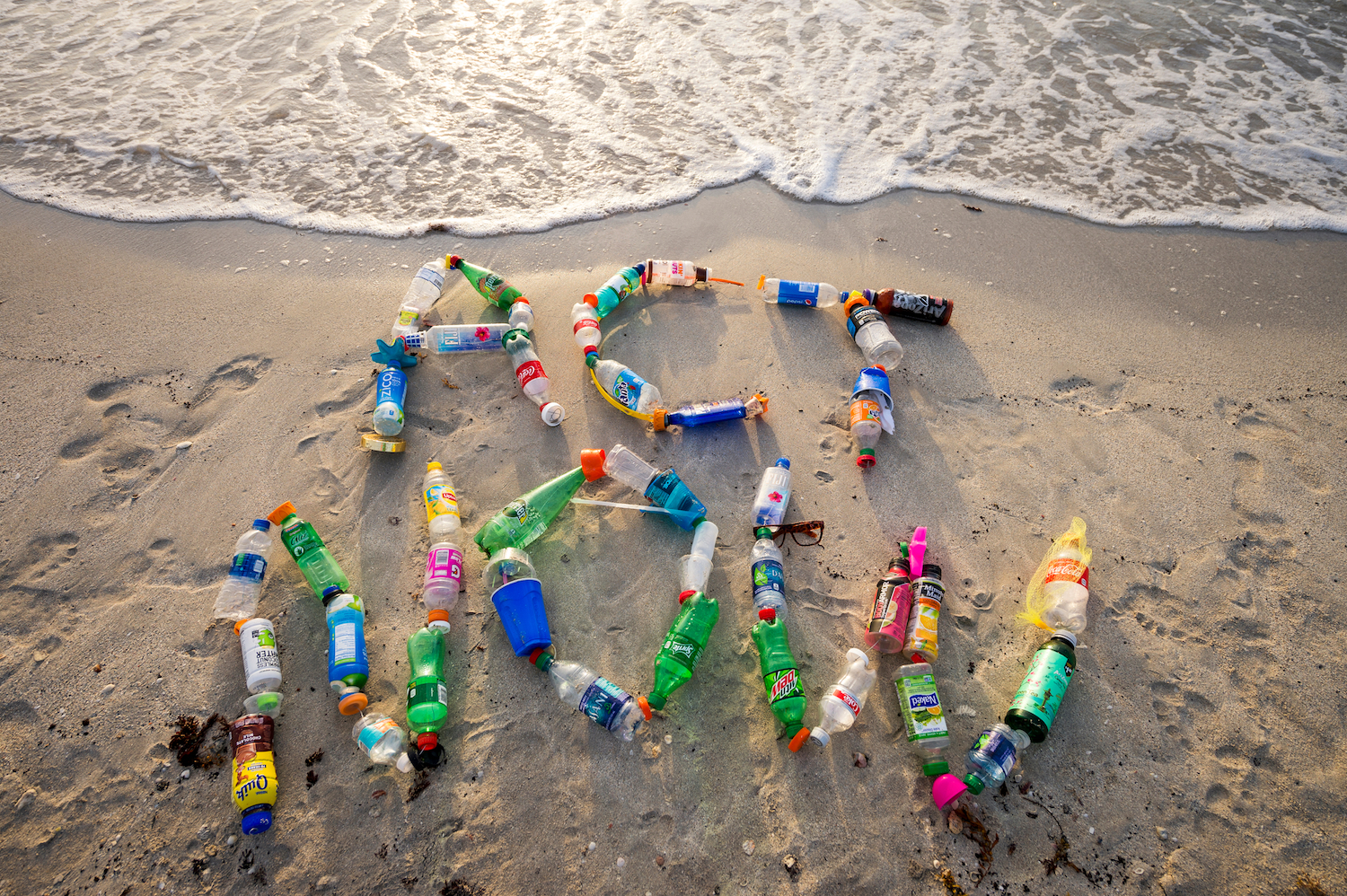Written by Tiffany Paige, Green With Tiffany
When I started “Green with Tiffany”, my goal was to raise awareness about the importance of the health and wellness of both people and the planet (a topic that is often forgotten). What started as a hobby has turned into a passion and a calling.
When people look to become healthy, they think of diet and exercise. But, what if food wasn’t the only thing you could change? Think of all the plastic we use on a daily basis, such as the containers that carry and cook our food!
What’s so bad about plastic?
The two components in plastics that experts are most concerned about are phthalates and bisphenol-A (BPA), which are often referred to as endocrine system disruptors because of their ability to affect estrogen and testosterone levels in humans.
They also have the potential to impact the development of the brain and reproductive organs in developing fetuses.
Your endocrine system regulates your metabolism with the help of your thyroid. It also produces hormones and regulates your immune system. It’s a pretty important network of glands in your body that plays many functions! So, if you are taking in chemicals that disrupt how this system works, what’s the point of eating healthy?
I believe that reducing your individual dependence on plastic products will support you on your health journey, while also supporting a healthier environment for you and your neighbors. What we as individuals do to the environment has an impact for everyone living in it.
I have outlined eight ways you can reduce the plastic in your life, so that you can be part of creating better health and a better world for everyone.
8 Ways To Reduce Your Plastic Use
1.Single-use plastic water bottles. These are not only wasteful and harmful for the environment, but they are bad for your health. They contain two issues: bad water and bad plastic. Not all water is alike. Plus, when these bottles get heated up, the harmful chemicals of the plastic leach into the water inside them. I am a fan of alkaline water and have it delivered in glass, but if you cannot do that there are many ways to access clean water without using plastic! There are small portable filters that you can use on the go with a reusable glass or stainless steel bottle. You can get a sink top filter for your water at home from the tap. The grocery store sometimes has water machines to fill up a larger jug or bottle with filtered or alkaline water. There are also alkaline water stores popping up everywhere.
2. The most ubiquitous plastic is the single-use plastic bag. Bring your own cloth bags for grocery shopping. Remember to wash them periodically. Many cities are now charging a small fee for grocery bags, but even if your city is not doing this, it is one of the easiest ways to cut back on plastic in your life. Don’t forget, those bags we put our produce in count as plastic, too! They make reusable produce bags now as well, so there is always another option.
3. To-go food and drink is another place to take a look at how much extra plastic you are consuming. The plastic that comes with everything, from your morning latte to lunch on the run, can be surprising. Try reducing the amount of to-go plastic you consume by committing to packing your own lunch 2 days a week – or whatever feel most comfortable with to start!
4. Hot tea and coffee drinks. Many coffee cups are made out of polystyrene (aka styrofoam) or paper lined with plastic, and the lids are plastic too. When drinking a hot cup of coffee through that little hole of the plastic lid, you are taking in toxins from both the cup and the lid.
Maybe you could stop at a coffee shop that serves their coffee in a real ceramic mug and take a few moments for yourself. You can also bring your own reusable stainless steel travel mug – many are made with metal or ceramic lids these days. Or, if your travel mug has a plastic lid, you can take it off when you’re ready to drink.
If you can, prepare your coffee at home. But, skip the plastic disposable pods. Easy, yes. Safe, no. Once again, heated plastic means toxins straight into your body, and hot water shoots straight through the plastic pod when the coffee is being made.
For tea, the same rules apply as stated above for your coffee, with the added concern of plastic teapot warmers. I say stay away! The microwave? Forget it. Stick with a good ole’ fashioned glass or stainless steel teapot kettle on top of your good ole’ fashioned stove. It’s your best bet.
Also, pay close attention to the tea bag and what it’s made of as many are plastic and full of chemicals. Look for only organic and fair-trade tea in unbleached paper tea bags or looseleaf tea.
5. Straws!!! Straws are easy to just skip. Straws are never needed. If you must have one or a few for your family, there are great alternatives. Glass is my favorite. Stainless Steel is another choice. Just remember to clean them after each use, especially before your smoothie dries up in it. You can also buy a cleaner and a pouch alongside it. Did you know some people drink their coffee out of a straw, so they don’t stain their teeth? Again, heated plastic. There are also plant-based and paper options if needed in a pinch.
6. Plastic utensils or silverware. Keep silverware with you in a pouch from home. You can store it in your desk at work, your car, or tote bag (where I keep mine). Camping utensils aren’t just for camping anymore. There are many choices. Just make sure that they are still not reusable plastic. You don’t want to be eating hot food with plastic!
I carry my bamboo utensils with me everywhere and it comes in its own pouch. If you need something smaller, there are also versions like a “spork” — a spoon/ fork that folds and can even fit in an evening bag. Did you know France has banned disposable plastic cutlery, cups, and plates in effect as of 2020? If they can do it, we can too!
7. To-go containers! To-go containers are one of the hardest. Many restaurants, even organic and healthy restaurants, are using the cost effective Styrofoam or plastic clamshells. I make an effort to support businesses that use a better container. Times are changing and patrons want something better: there is also legislation being put in place to create less plastic waste. Many restaurants use cardboard boxes.
This can be easier to avoid if you dined in the restaurant but want to take home leftovers. You could ask them to wrap the food in tin foil or bring your own containers. I have a triple tiered stainless steel container I take with me when eating out for this purpose.
Soup is a special consideration! Hot soup is the worst for to-go. It’s usually served in a plastic or Styrofoam cup and lid. Again, heated plastic is the most toxic and leaches into your food. I have stainless steel bowls with lids, which I use to pick up my soup.
8. Leftovers and food storage – If you can, move from plastic to glass. There are so many options for glass storage these days. Some have plastic lids, which could be ok if you don’t have food touch it or heat it. There are glass containers out there with food grade silicone lids as well. You can also purchase lids on their own to fit any size bowl.
The plastic “Tupperware” that we are so accustomed to is what needs to be replaced. I know many also use plastic “Ziploc” type bags for food storage both in their fridge and freezer for space saving. There are now silicone bags that could be a better choice. I use glass containers for almost everything. There is also wax paper, butcher’s paper, beeswax paper, and mason jars, all of which are a better choice than plastic.
Don’t fault yourself while making the switch, change can be a challenge, so maybe just pick one or two to start gradually. Do the best you can, and share your progress with us below! I hope these tips help you reduce your plastic use, improve your health, and support the environment!








